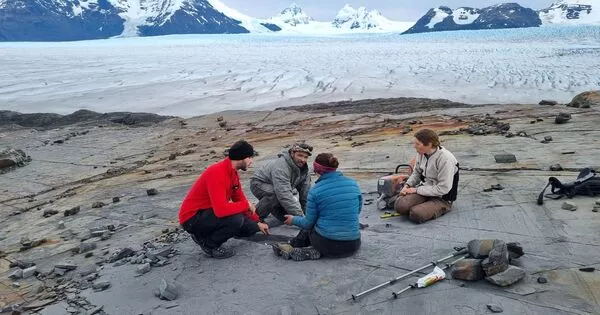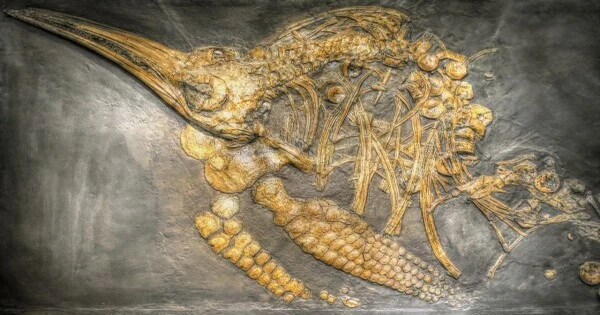The University of Manchester discovered a 13-foot pregnant ichthyosaur fossil in a melting glacier deep in Patagonia. According to IFL Science, it was the first complete ichthyosaur discovered in Chile and is in a condition of preservation unparalleled anywhere in the world.
Dr. Dean Lomax, the study’s author and paleontologist, stated that the large number of ichthyosaur fossils discovered in the area provides a unique glimpse into the past.
Fiona, the pregnant Ichthyosaur
Fiona, the pregnant ichthyosaur named by the team, died 139 million years ago during the Early Cretaceous period. The remains were retrieved from melting ice in the Tyndall Glacier area of Chilean Patagonia by an expedition conducted by the University of Magallanes (UMG).
In a news release from The University of Manchester, Dr. Judith Pardo-Pérez, the first female paleontologist to oversee such a large expedition, said in a news release that the finds exceeded their expectations.
The researchers, led by Pardo-Pérez, said in a statement: “At 4 meters [13 feet] long, complete, and with embryos in gestation, the excavation will aid in providing information on its species, the palaeobiology of embryonic development, and a sickness that afflicted it during its lifetime,” the researchers said in a statement.
Fiona’s remains were helicoptered out of the glacier to be studied. They were able to track her back to the Valanginian-Hauterivian epoch of the Early Cretaceous. Ichthyosaurs are warm-blooded marine reptiles with long rostrums and pointed teeth that resemble dolphins and swordfish.
Dr. Erin Maxwell, expedition team member and curator of marine reptiles and fossil fishes at Stuttgart’s State Museum of Natural History, stated that there are few marine reptile fossils from this time period globally, and those that exist are from Europe.
Outstanding Early Cretaceous Ichthyosaur
The mission lasted 31 days and was aimed at identifying, retrieving, and carefully packing the delicate fossil remains discovered in the melting glacier. According to Vice, this year’s mission was one of more than ten visits to the Tyndall fossil site by Pardo-Pérez since 1997.
They erected a hangar over Fiona’s bones to shield them from the weather, and they used diamond equipment to quickly drill and break the hard rocks that surrounded her body. These tools are more durable than the standard hammer, chisel, lump, and brush.

Fiona is the sole known specimen of a pregnant ichthyosaur from that time period, making it the first of its kind discovered in Chile. According to Pardo-Pérez, Fiona and the other 23 ichthyosaur specimens discovered by Pardo-Pérez are the best early Cretaceous ichthyosaur fossils in the world. The fossils will now help researchers learn more about the nature of these ancient marine reptiles.
On the other side, she is concerned about the additional ichthyosaur fossils that may never be recovered because access to the dangerous regions where the fossils were collected is difficult. She hopes that those fossils will be preserved as they are being eroded on a daily basis.
The team wants to acquire data on the variety, disparity, and palaeobiology of ichthyosaurs from the Tyndall Glacier in order to analyze how they lived and evolved, which could aid in establishing paleobiological links between ichthyosaurs and other species.





